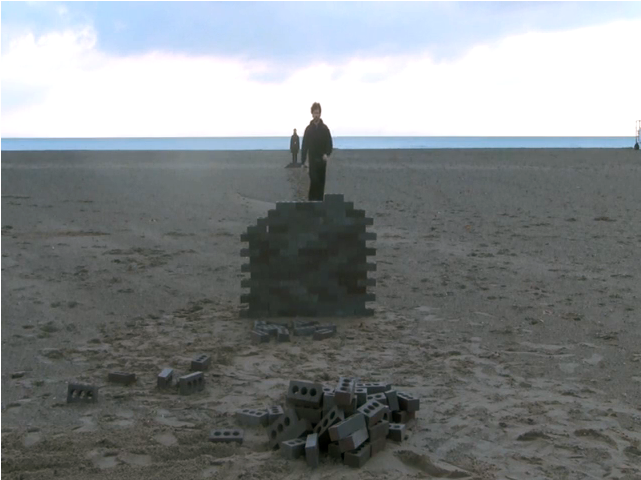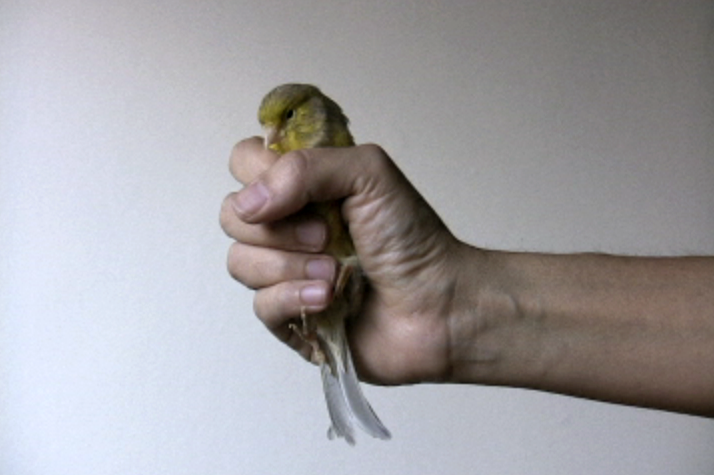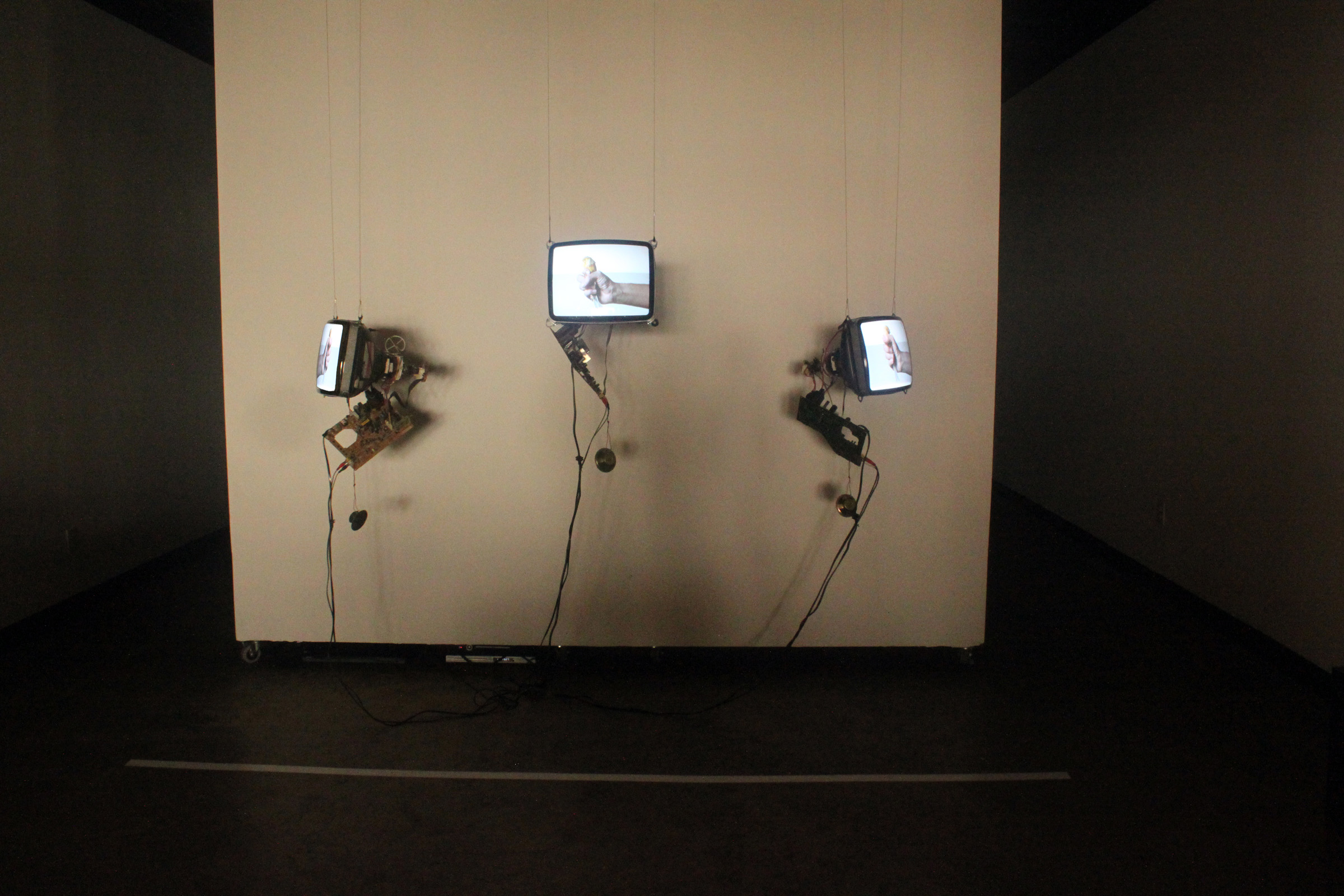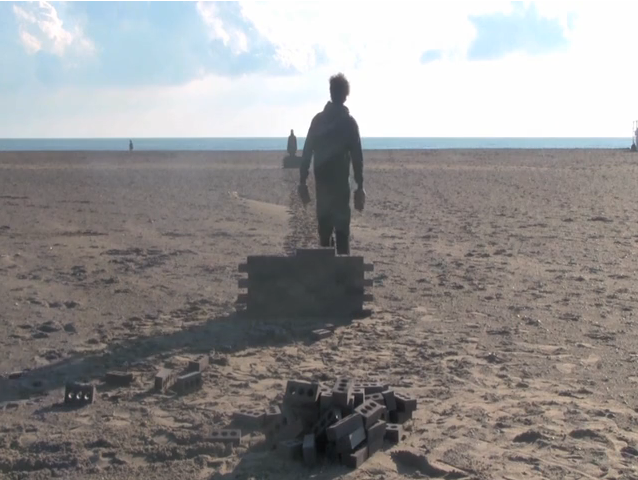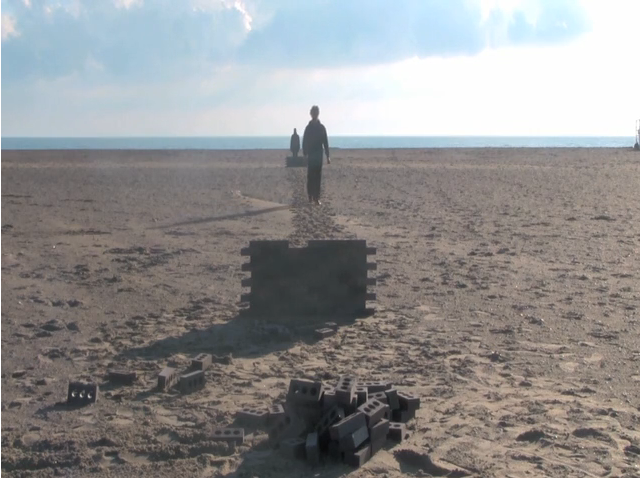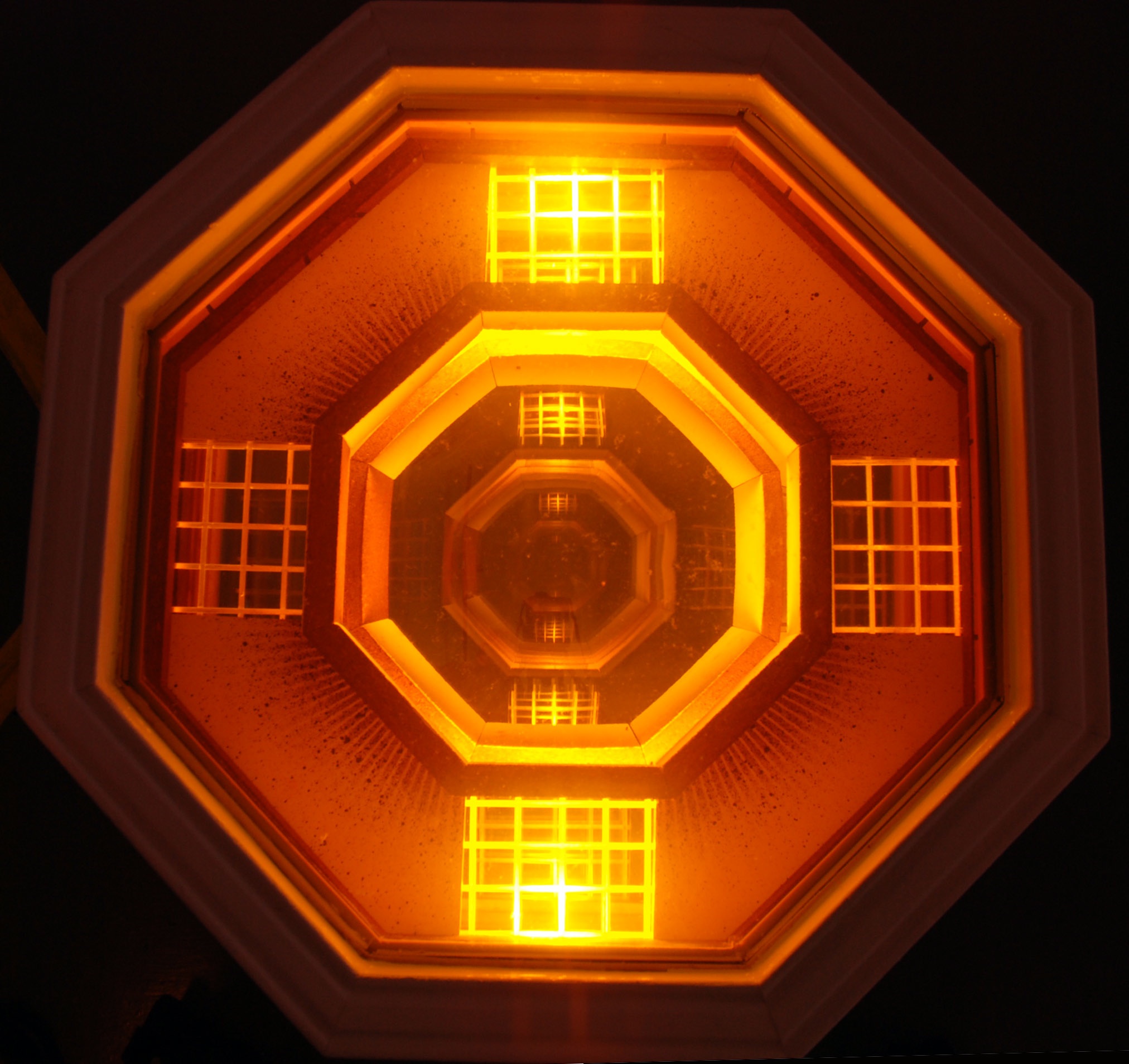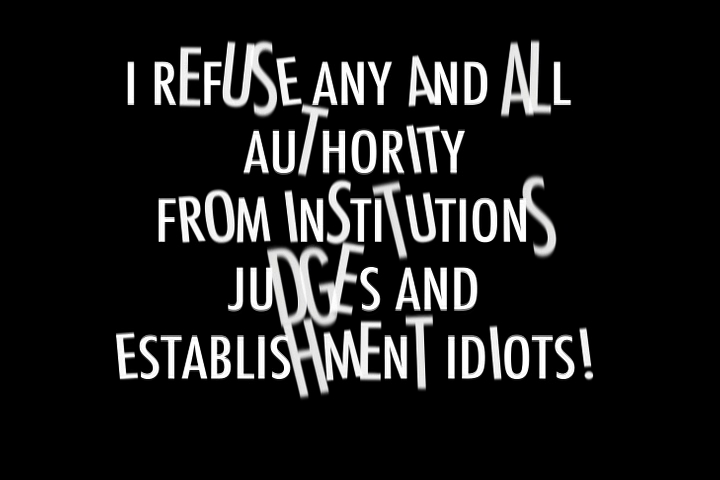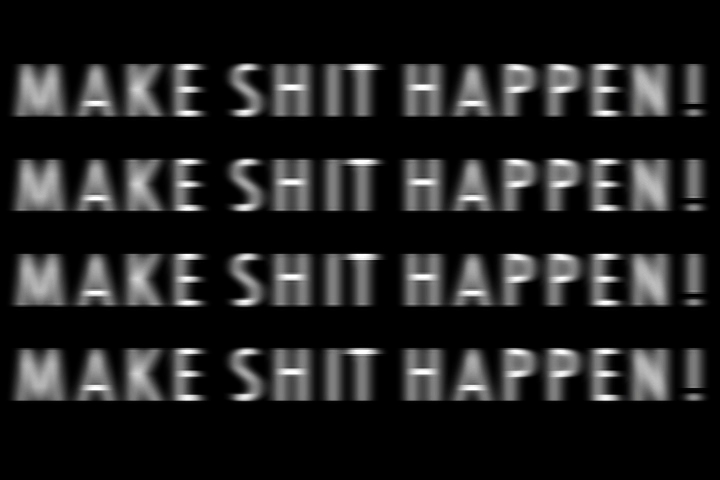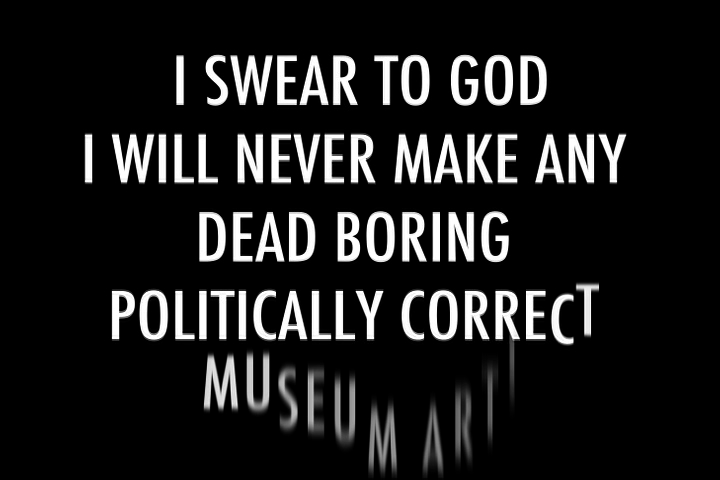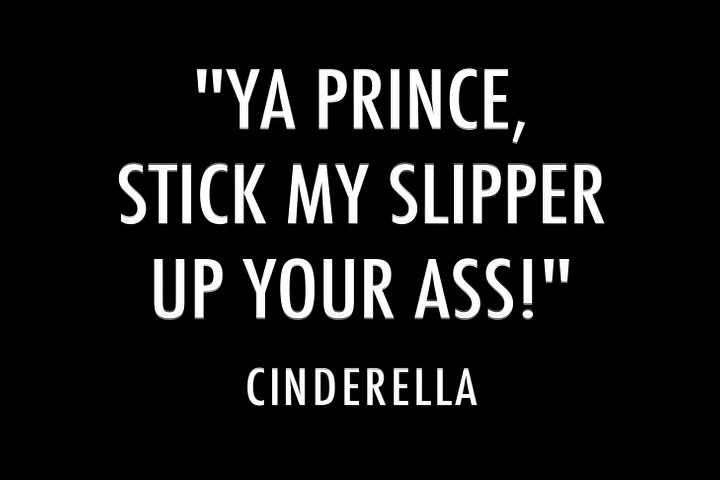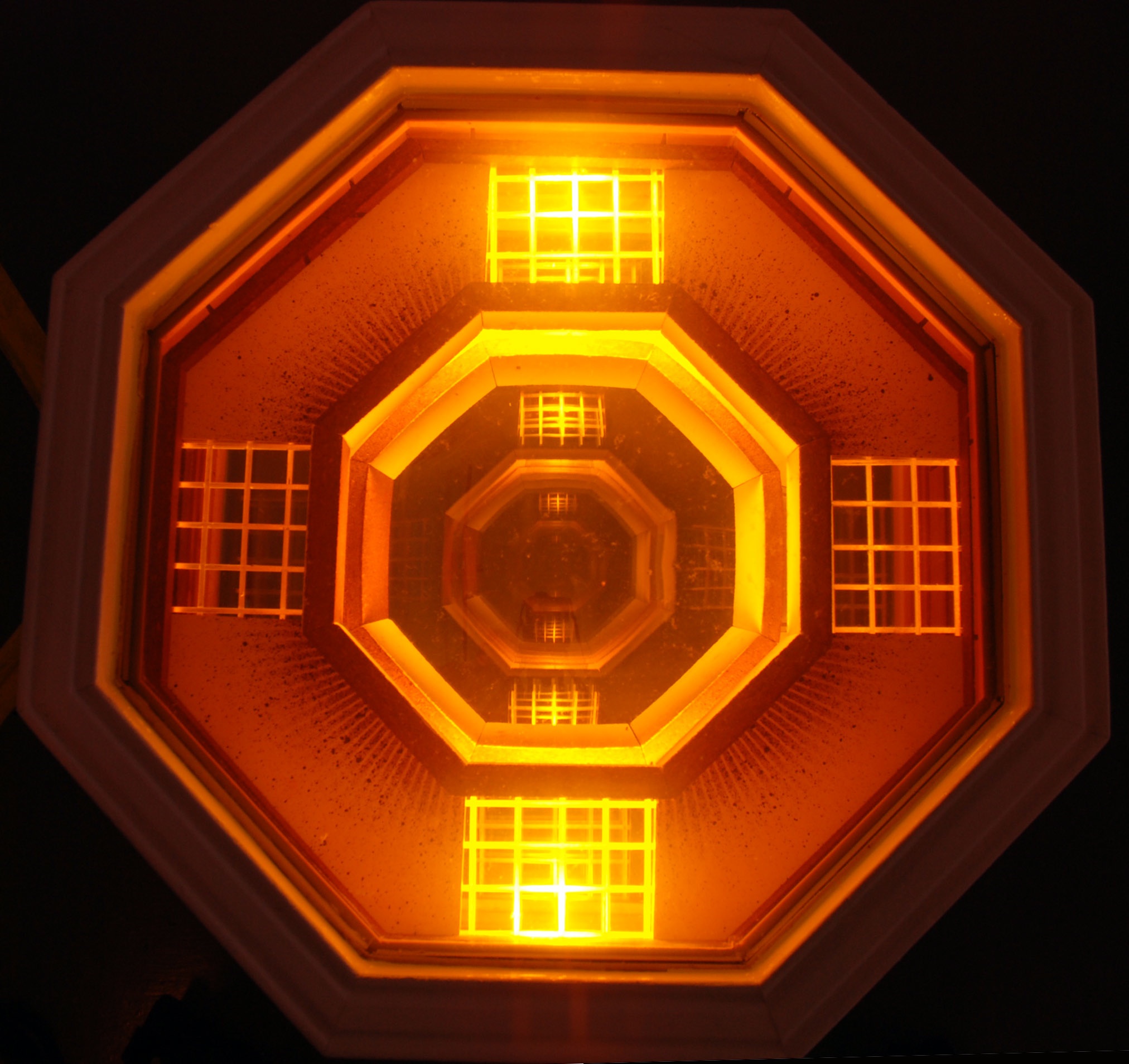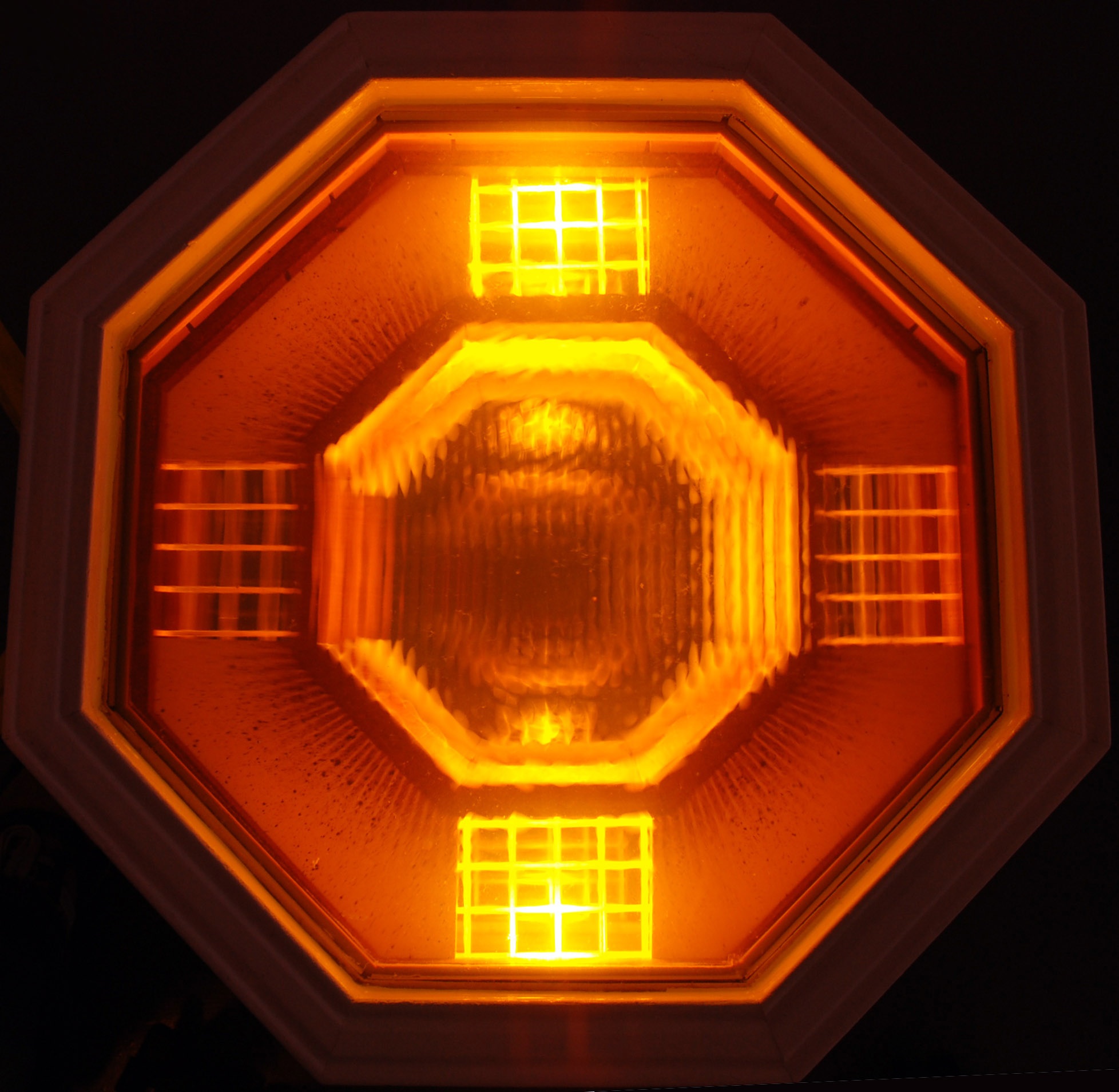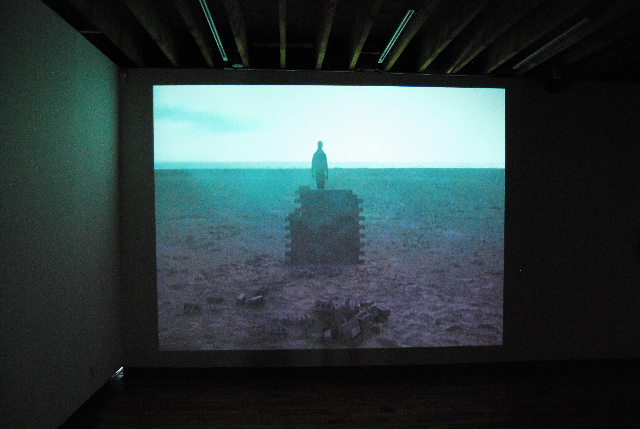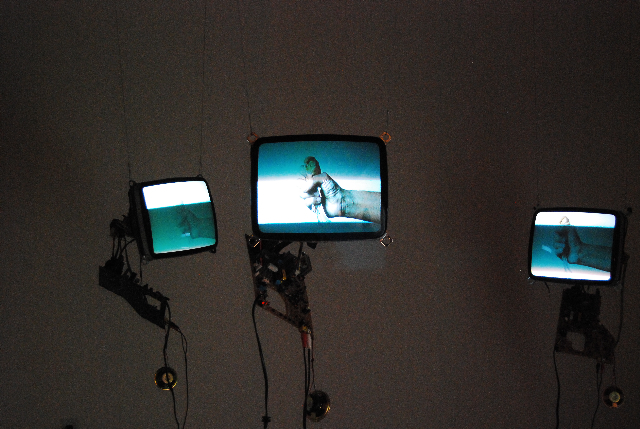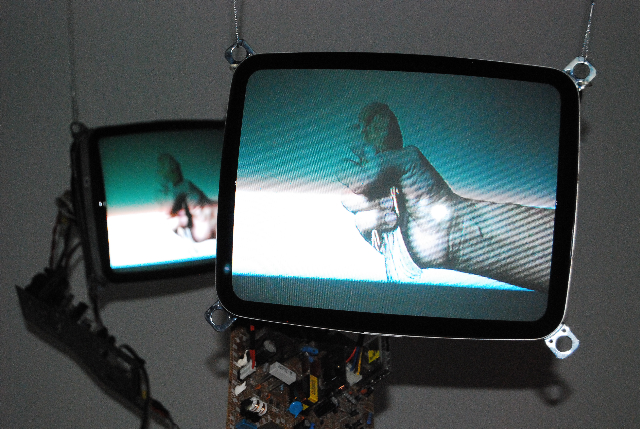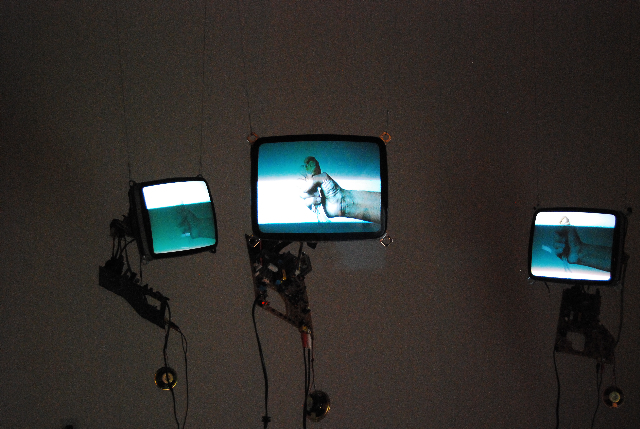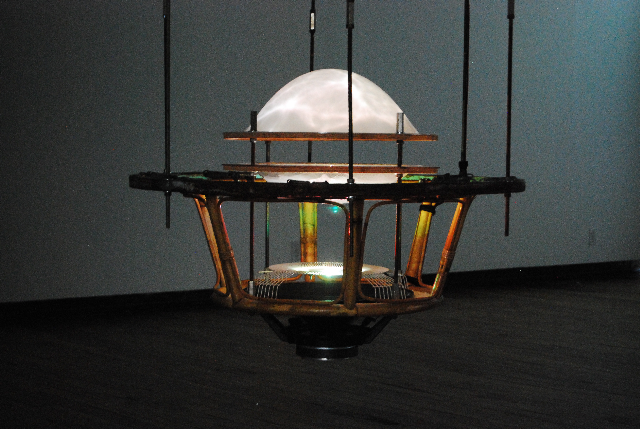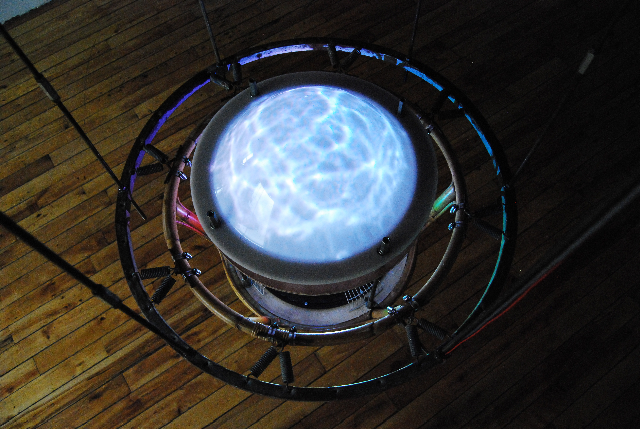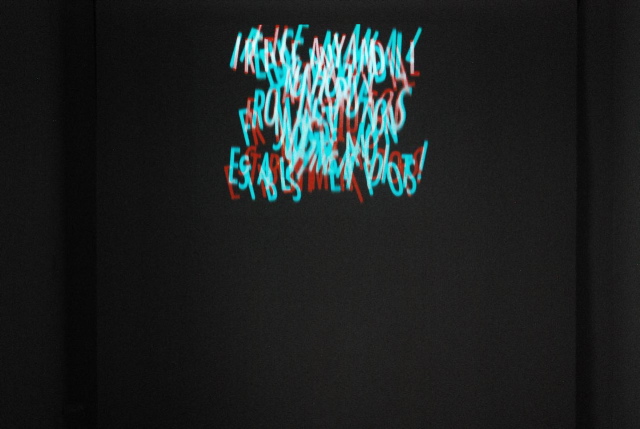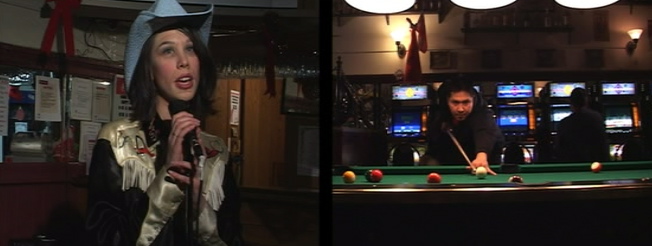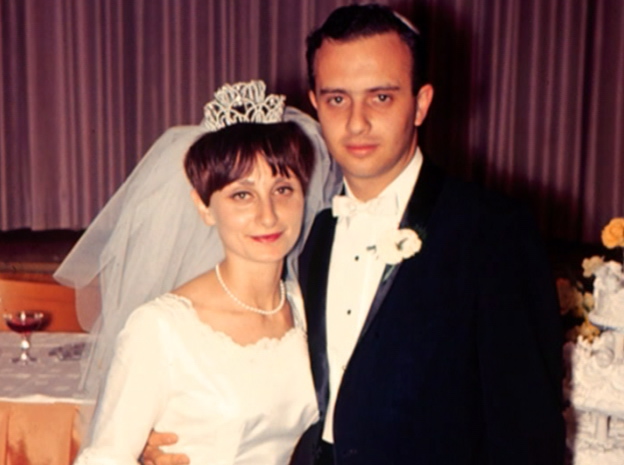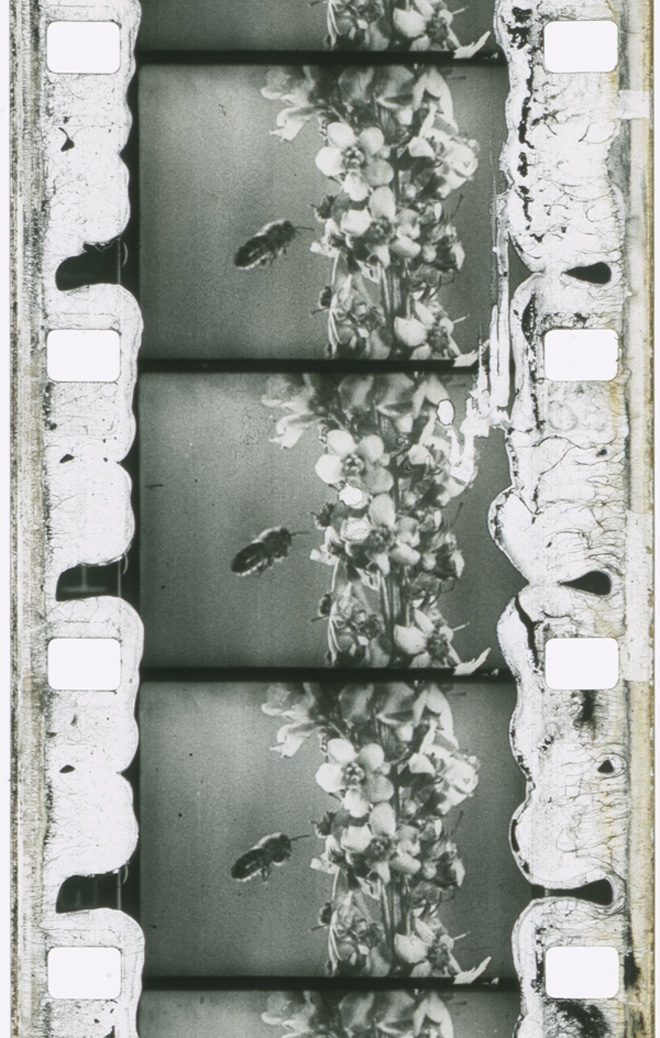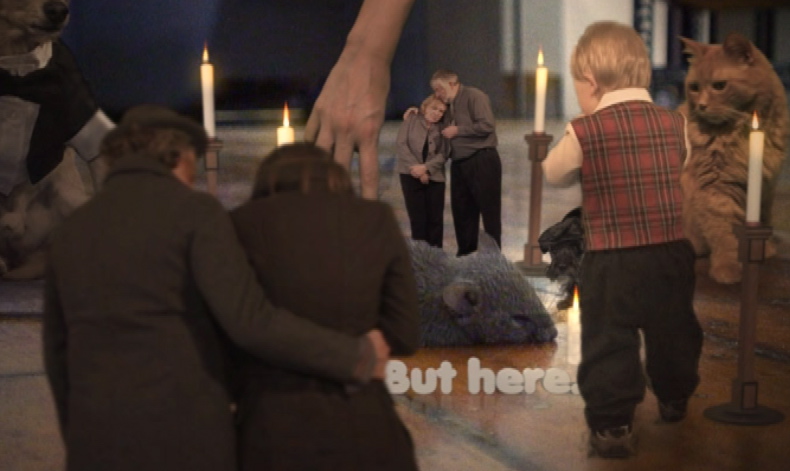Part of Winter 2011
The 2011 New Toronto Works program features an eclectic mix of artists using various techniques in contemporary film and video, varying widely from animation, performance for the camera and hand-processed film.
The spirit of performance infusing the works in this program may not be deliberate or explicit; in many cases it plays out as an exercise in futility. Keith Cole’s Left explains the conceptual underpinning of his mayoral candidacy. Julian Higuerey Nuñez’ World Record and Jonathan Culp and Monica Clorey’s Reproduction Prohibited restage feats of might that are potentially quite traumatic, the former reimagining a moment of cultural importance, the latter subverting gender norms in its reperformance. We see a performer vanishing in front of her webcam as air passes through her bedsheets in Victoria Cheong’s Degree of Freedom, and this ethereality is echoed in Yi Cui’s Shadow Puppets through the interaction of emerging shapes and light. (Laura Paolini & Guillermina Buzio)
While several works feature performances for the camera, others are more conceptual. Dan Browne’s Hand Processing is the result of a camera test he had performed with the shutter closed. Other works present issues that are somewhat difficult to swallow, and require active reading and negotiation. Variations in visual approaches, narrative strategies and tactile experiences make for a dynamic program with clear conceptual and performative threads binding it together.
Bind Together; Films and Videos
Programme:
Left, Keith Cole, 4:00 min. video, 2010/11
Trophy Life, Andrew James Paterson, 2:00 min. silent, video, 2010
down(town)time, Steve Loft, 3:22 min. video, 2009
Willow Roots, Stan Kryzanowski, 1:16 min. video, 2010
Untitled, Nathan Cyprys, 2:41 min. Super-8 transferred to video, 2009
Television, 1:00 min. video & Vanity, 1:00 min. video, Amy Jenine and Dan Joseph, 2010
Gladstone, Chris Kennedy, 2:00 min. 16 mm, 2010
Shadow Puppet, Yi Cui, 5:30 min. silent, 16 mm, 2010
Dear Mom and Dad, Evan Tapper, 1:30 min. video, 2009
B-Film Keeper, Gerda Cammaer, 13:00 min. 16mm on video, 2009
I’m Sorry Sterling, RM Vaughan/ Jared Mitchell, 4:00 min. video, 2009
self-portrait in alterNation between descension and ascension, Jude Norris, 3:55 min. video, 2010
Record Mundial (World Record), Julian Higuerey Nuñez, 00:24 min. video, 2010
Reproduction Prohibited, Jonathan Culp & Monica Clorey, 5:03 min. video, 2009
Chris, Don Bapst, 4:19 min. video, 2009
Fruit Flies, Christine Lucy Latimer, 1:30 min. 16mm, 2010
Degree of Freedom, Victoria Cheong, 6:13 min. video, 2010
Hand-processing, Dan Browne, 3:00 min. 16 mm, 2010
SIX, Kelly O’Brien, 3:00 min. Super-8, 2011
Wee Requiem, Jenn E Norton, 7:03 min. video, 2010
Installations @ InterAccess, 9 Ossington Ave. March 5 — 20
Works by:
Julieta Maria, Bird, digital video loop, 3 min, 2010
Istvan Kantor, Banners, video projection, 1 min loop, silent, 2010
Tamara Platiša and Saša Rajšić, Wall to Wall, video loop, 1 hr 15 min. 2010
Sean Procyk, Suspended Subwoofer Prototype, 2010-11
Bind Together: Installations
In addition to the traditional screening of fresh films and videos, Pleasure Dome has partnered with InterAccess Electronic Media Arts Centre to showcase media installations for the New Toronto Works show. In the past, installations have been featured at the NTW screening venue, but this partnership has allowed these intriguing works their own space to breathe.
The artists varied cultural and artistic backgrounds create an enticing dialogue between their works and their interpretation of actions, nature and technology. Former Governor General award-winner Istvan Kantor has a reputation that precedes him, yet Banners illustrates another branch of his practice. His bombastic and performative videos have often featured textual components overlayed onto images, but in recent years he his animations have been created solely out of text. The slogans resonate revolutionary thoughts but are also quite humorous (putting Cinderella in control of her glass slipper, for example). On select nights Banners is projected into a window overlooking Ossington Avenue, intervening in street life. This reveals the time-based nature of the work, and becomes a performative gesture, an experiment of sorts, to gauge Banners‘ potential to incite new revolutions outside of the isolated space of the gallery.
On the opposite side of the gallery resides Julieta Maria’s Bird, a seductive yet alarming video installation. The screens seem to float in the air, playing a video of a canary wriggling in the artist’s hand. The bird relentlessly tries to escape her grip, but never succeeds. The minimalism of the monitors can only be accomplished by removing them from their protective cases; cases that don’t necessary protect the monitor but protect the viewer from high voltage electronic components. The hidden, implicit violence in this piece is amplified by the paradox of feeling a closeness that is hindered by an awareness of separation.
Sean Procyck’s Suspended Subwoofer Protoype exists within a larger body of work where he uses and reuses the same materials. This series has allowed him to not only recycle materials that others would consider debris, but to actively take apart and rebuild his own pieces. Suspended Subwoofer Protoype combines and manipulates water, sound, architecture and everyday objects to produce a unique light and sound pattern triggered by an individual’s presence. A sensor measures the viewer’s proximity to the structure and sends this information to a microcontroller that operates a LED and subwoofer, generating an audio-visual response to the stimulation. “Everything is subtle and after some time we figure where those vibrations are coming from and how they relate with their own image and the image they produce. The interactivity allows us to decide.”[1]
Yugoslavian-born Tamara Platiša and Saša Rajšić, now Toronto-based collaborators, use video to document performances that reference andrecontextualize historicity. Wall to Wall opens with a shot of a brick wall on the beach. According to the artists, “the brick wall is a direct reference to the structural element of a house, specifically linked to the historic and geographic location of the former Yugoslavia. The brick wall is built, collapses, is recovered and collapses throughout the duration of a performance.”[2] As the performance continues, the bricks on the beach become part of a process of breaking down and rebuilding, placement and displacement. The work is rigid yet dynamic; it conjuncts and contradicts. The bricks are placed on the sand, the wind shakes the camera, and the wall falls. Tamara is still, Saša walks, they never end the action, the building or the set. The setting becomes symbolic of the futility of the action; its incompleteness forms a time and place that cannot be revisited.
The physical and conceptual acts of construction manifest in each work in this show bind together these subtle, engaged and socially/politically-conscious installations, creating a powerful dialogue around history, agency and revolutions to come.
[1] Sean Procyck, Suspended Subwoofer Prototype (artist statement)
[2] Tamara Platiša and Saša Rajšić, Wall to Wall (artist statement)
Installation Artists Bios:
Julieta Maria is a Colombian, Toronto based new media artist with an MFA in visual arts from York University. She has worked with video and multimedia installations to explore issues like migration and memory. Julieta’s recent work has been centered on video documentation of staged actions, exploring the experience of violence as an intrusion in the everyday relationship between the subject and the world. Julieta’s video work has been shown in several venues in Toronto, Colombia and the U.S. She has been actively working with artistic organizations, being a founding member of e-fagia, a collective working in new media arts, and a member of the board of directors of aluCine Festival, International Latin film and video festival in Toronto.
Bird (digital video loop, 3 min, 2010) is a close up of my hand holding a canary, while it moves, trying to free itself from the grip. It is a helpless situation. The bird is forever trapped in an endless loop in which it does futile attempts at escaping. The video reflects on fragility, beauty and violence, questioning the limits of our ethical relationship to one another and to the world. What does it mean to confront what is vulnerable? Is there a certain pleasure in the domination of others? What does it mean to have infinite power?
This video presents violence as a physical sensation. The flapping of the wings is a mute voice, a material voice. It is also the thrill of having someone’s heart trembling in your hand, someone’s pain in your hand.
Istvan Kantor, recepient of the 2004 Governor General’s Award for Visual and Media Arts, also known as Monty Cantsin, open-pop-star, the founder of Neoism, “Self-Appointed Leader of the People of the Lower East Side”, is an action based media artist/subvertainer/producer, active in many fields, performance, robotics, mixed-media, installation, painting, sound, music, video and new media. Kantor was born in Budapest where he studied medical science. In 1976, at age 26, he defected to Paris and from there he immigrated to Montreal. He also lived in Portland, New York, Berlin and presently is a resident of Toronto where his three children, Jericho, Babylon and Nineveh were born in the 90’s.
His main subjects are the decay of technology and the struggle of the individual in technological society. His work has been described by the media as intellectually rebellious, anti-authoritarian, as well as technically innovative and highly experimental. He likes to break things and set things on fire. He uses conflict and crisis to present his cause, often placing himself in the center of danger and uncertainty. His radically changing creative ambitions are always related to his living environment and social situation.
In collaboration with legendary correspondence artist David Zack, Kantor launched the Monty Cantsin open-pop-star project in Portland, Oregon in 1978. He initiated both the international operations of Neoism and his major life-long performance “Blood Campaign” in 1979 in Montreal. In the mid 80’s Kantor/Cantsin relocated to New York City, re-emerging as “self-appointed leader of the people of the Lower East Side”.
Kantors’s performance based work explores the body as well as technology, from blood to video to physical gestures via digital sampling, breathing, computers or pneumatic machinery. He often incorporates objects such as steam irons, coat hangers, clocks, flags and megaphones into his actions.
Throughout the past three decades he has been arrested and jailed many times for his guerilla interventions in museums. He also received many prestigious awards among them the Telefilm Canada Award for Best Canadian Film and Video in 1998, in Toronto and the Transmediale Award in 2001, in Berlin.
Besides his individual work he is bandleader/singer of the Red ArmBand and founder-member of several performance groups among them Puppet Government, MachineSexActionGroup and Kantor Family Circus.
Banners, video projection, 1min loop, silent, 2010 is a animated graffiti loop of slogans designed for large projection in billboard style propaganda format. I often use textual components in my video works mostly overlaying them on images but I also produced many text-only animations in recent years. While the content of Banners is confrontational it is also playful and spiced with irony. Banners can be displayed basically anywhere in public environments where people move through and throw a glance at the flickering messages.
Sean Procyk is an everyman from the GTA who holds a BA in Architectural Studies from Carleton University and a Masters of Fine Art from OCAD University. As an artist trained in architectural studies he attempts to create immersive or experiential works that investigate the relationship between light and sound in space. His creative process involves experimenting with construction methods, electronic prototyping and computer programming. His work considers how these disparate practices of making may be used to reshape our perception of an environment. The Suspended subwoofer is the most recent exploration that does this, by using reclaimed materials to create a responsive sculpture, which emits both a light and sound in the space.
Suspended Subwoofer Prototype (2010-11) I have all the characteristics of a bricoleur: fettered consciousness, subversive tendencies, slight neurosis and a hammer and nails, but not a single, clear identifiable trajectory, except for constructing. My nightly foraging of artifacts has over flown into my days. I feel fatigued, at the threshold of consciousness. I think my mask of conformity is about to slip.
Where there are scraps, repression, death and obsolescence, I see prostheses. They lay waiting to be reinvented in ways that can only be realized unconsciously.
Within my work there is the idea of bricomancy; an abstract premonition sought through an intuitive process of making. This phenomenon is so transitory, yet periodic that even after its passing it is everlasting. It is the process around which my reality revolves. It is how I imagine the tangible evolves. It is what I relate to. It’s a lifestyle choice.
Tamara Platiša was born in Yugoslavia (1989). She studied Sculpture & Installation, Drawing & Painting at OACD from 2007-2011. She lives and works in Toronto.
Saša Rajšić was born in Yugoslavia (1985). He studied Sculpture & Installation, at OACD from 2007-2011 and Glasgow School of Art, UK (2009) . He currently lives and works in Toronto.
Wall to Wall (video loop, 1 hr 15 min. 2010). This performance was documented with a single camera from one perspective. The video begins with an image of a brick wall in the foreground. These bricks were not cemented for the duration of the performance. As time progressed it became visible that this brick wall was being taken apart by Rajšić who is behind this wall. All while Platiša stands at a distance from both Rajšić and the wall. With each brick Rajšić performed the repetitive action of taking one brick at a time and transporting it to a location behind him, indicated by Platiša. Once Rajšić has formed a new wall from the same bricks Platiša’s image has disappeared to the viewer. In actuality, the brick wall fell on Platiša, an indication for Rajšić to lay down the last bricks and stand behind Platiša. Platiša began to dismantle the ruins that lay before her, carry them and place them two by two in front of Rajšić. This performance supports Hegel’s idea that the only thing we learn from history is that we don’t learn from history. The brick wall is a direct reference to the structural element of a house, specifically linked to the historic and geographic location of Former Yugoslavia. The brick wall is built, collapses, is recovered and collapses throughout the duration of a performance.

